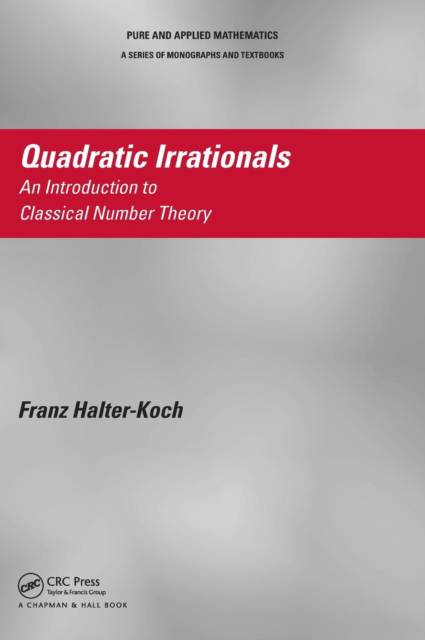
- Retrait gratuit dans votre magasin Club
- 7.000.000 titres dans notre catalogue
- Payer en toute sécurité
- Toujours un magasin près de chez vous
- Retrait gratuit dans votre magasin Club
- 7.000.0000 titres dans notre catalogue
- Payer en toute sécurité
- Toujours un magasin près de chez vous
Description
Quadratic Irrationals: An Introduction to Classical Number Theory gives a unified treatment of the classical theory of quadratic irrationals. Presenting the material in a modern and elementary algebraic setting, the author focuses on equivalence, continued fractions, quadratic characters, quadratic orders, binary quadratic forms, and class groups.
The book highlights the connection between Gauss's theory of binary forms and the arithmetic of quadratic orders. It collects essential results of the theory that have previously been difficult to access and scattered in the literature, including binary quadratic Diophantine equations and explicit continued fractions, biquadratic class group characters, the divisibility of class numbers by 16, F. Mertens' proof of Gauss's duplication theorem, and a theory of binary quadratic forms that departs from the restriction to fundamental discriminants. The book also proves Dirichlet's theorem on primes in arithmetic progressions, covers Dirichlet's class number formula, and shows that every primitive binary quadratic form represents infinitely many primes. The necessary fundamentals on algebra and elementary number theory are given in an appendix.
Research on number theory has produced a wealth of interesting and beautiful results yet topics are strewn throughout the literature, the notation is far from being standardized, and a unifying approach to the different aspects is lacking. Covering both classical and recent results, this book unifies the theory of continued fractions, quadratic orders, binary quadratic forms, and class groups based on the concept of a quadratic irrational.
Spécifications
Parties prenantes
- Auteur(s) :
- Editeur:
Contenu
- Nombre de pages :
- 432
- Langue:
- Anglais
- Collection :
- Tome:
- n° 306
Caractéristiques
- EAN:
- 9781466591837
- Date de parution :
- 17-06-13
- Format:
- Livre relié
- Format numérique:
- Genaaid
- Dimensions :
- 183 mm x 257 mm
- Poids :
- 952 g

Les avis
Nous publions uniquement les avis qui respectent les conditions requises. Consultez nos conditions pour les avis.






